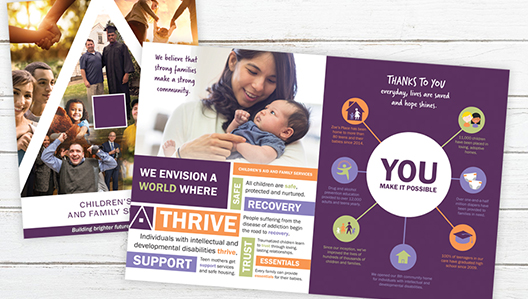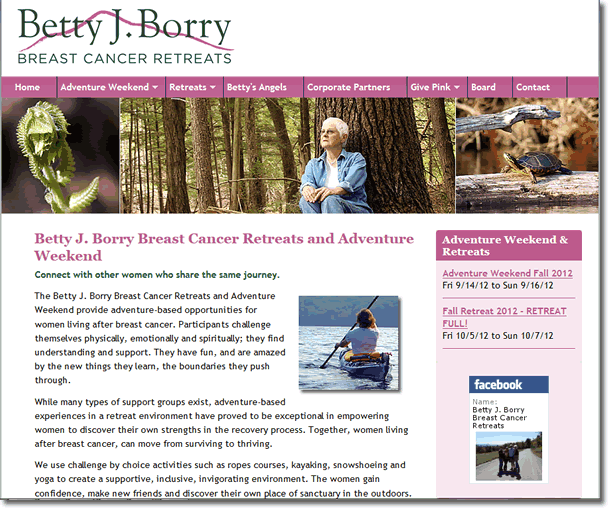Making the case for branding your nonprofit.
- Nonprofits Need Branding Too Good
- Nonprofits Need Branding Tools
- Nonprofits Need Branding Too Rich
- Nonprofits Need Branding Too Much

In the past, branding was seen as belonging only to the for-profit world. The idea of branding has been an uncomfortable one for nonprofits to stomach and many of them have regarded it with fear, perhaps because it has always been associated with 'sleazy' marketing techniques and limited to for-profits and their business models. But in our modern times, that is no longer the case and nonprofits can stand to benefit from jumping into the branding scene.
Consumers need brands. They have too many choices – from breakfast cereal to cable channel – idealist.org lists over 93,000 organizations and over 17,000 volunteer opportunities – Charity Navigator evaluates “over 5,000 of America’s bestknown charities”. Choice is not always a good thing – complicates our lives – can cause people to “shut down” in the face of too many options. Companies in this category don’t feel like they need help and are unlikely to respond to engagement efforts from the social sector. Potential nonprofit partners will need to maintain the relationship, leverage their relationships with other businesses to share experiences, and look out for transitions into growth or trouble stages. Understanding what branding is in the nonprofit sector is only the beginning. Being proactive will help reap the benefits of increased exposure, revenue, and volunteers. In this competitive marketplace, nonprofits need to differentiate themselves from the throngs of other choices. For example, the 15% discount for nonprofits and a 10% security discount would equal a 23.5% total discount, rather than a 25% discount. If you have other questions about our discount policies that aren’t answered here, please reach out to us through our contact form.
Let's start with an example of excellent nonprofit branding.
To begin, you might think that your nonprofit marketing strategies already address branding, or have already incorporated it. But branding, while working closely with marketing, is its own entity.
Marketing is what gets the word out there about your organization, branding is what people will have to identify you with. Marketing is the brain and body. Branding is the face and heart of your nonprofit. It's all about consistency and even more about repetition, and we open this article with an outstanding real-life example: Children's Miracle Network Hospitals, which implements a business model focused around cause related marketing, one of the many avenues nonprofits can pursue to fund themselves.


Who is Children's Miracle Network Hospitals?
Taken straight from their website:'Since 1983, Children’s Miracle Network Hospitals has raised more than $5 billion—most of it $1 at a time—for 170 children’s hospitals across the United States and Canada, which, in turn, use the money where it’s needed the most. These donations have gone to support research and training, purchase equipment, and pay for uncompensated care, all to save and improve the lives of as many children as possible. Our mission: To increase funds and awareness for local children’s hospitals.'
Nonprofits Need Branding Too Good
Why is their branding campaign so strong?
As mentioned, Children's Miracle Network Hospitals has capitalized on the cause-marketing model. For their program they partner with large corporations such as Costco, Sam's Club, and Rite Aid across the United States and Canada to run their Miracle Balloon Paper program for specific months during the year.
Nonprofits Need Branding Tools
How it works: A customer walks into a partner store, for example Costco, and as they check out the cashier asks them if they would like to participate in the program (for local children's hospitals) by buying a Miracle Balloon for just $1. If the customer decides to make a contribution they receive a balloon and get the chance to sign it. It is then hung from the ceiling, placed on the windows, or clearly displayed in other visible areas in the store.
Why does this make their brand so strong?: Branding is all about repetition, about making impressions, and continually reaffirming that impression. The more users see you brand, the more likely they will remember it. The Miracle Balloon Paper is 100% identical to their balloon logo. This means that customers are connecting with their nonprofit through their brand by signing the paper balloon, seeing it hung and displayed in their partner store. Talk about free marketing!
So what makes branding important?
We broke things down into three reasons why your nonprofit should, at the very least, consider branding. If you want to take it further, we even outlined some finer details in our article about creating your nonprofit brand.
Shifting perceptions.
Nonprofits Need Branding Too Rich
In earlier years, branding was considered by nonprofits to be too cold and uniform. Nonprofits feared that branding would cause their organization to disappear behind a logo. However, with the increased number of nonprofit organizations in the United States in the past decade alone, perspectives have shifted. Nonprofits have become more interested in using branding to help separate them from the masses of similar organizations vying for support.
Where for-profits use branding as a way to generate more revenue for whatever products or services they offer, nonprofits can use branding as a way further their cause and increase donations. Remember that donors will be more likely to donate to a well-known nonprofit simply because they recognize their logo.
Visibility.

A brand, in its most general sense, is a marker that the public can recognize as being you. Brands are the name, logo, and visual graphics your nonprofit employs, but it is also more than that. Your brand is what represents your organization and tells others who you are and what you stand for, your mission, your cause.
Nonprofits Need Branding Too Much
Visibility through your brand works through trust; they go hand in hand. Your brand will create trust among the public that you are a credible organization and that you are true to your word and to your cause. This trust is what will motivate the public to give to your nonprofit.
So in short, your brand is your logo and your attitude. It is crafted to differentiate you from other nonprofits and allows you to make a specific and individual impression. It is a visual, mental, and emotional way that the public can have access to your nonprofit. It is your voice. One easy way to generate more visibility is by using Google's nonprofit program.
It works internally and externally.
Externally, branding plays a large part in networking your nonprofit. It can create new partnerships and relationships with other nonprofits (both large and small) and with businesses, like CMNH did by partnering with Costco, Sam's Club, and Rite Aid. These organizations will be more inclined to working with your nonprofit as your brand will be one of the ways your nonprofit will show proven success.
Internally, branding not only works to drawn in the public but also works within your organization. It influences a nonprofit at its operational level, driving how your nonprofit works on an everyday basis. Having a well-established brand will bring unity to your nonprofit, creating focus and keeping everyone on the same page by reminding them about your cause.
